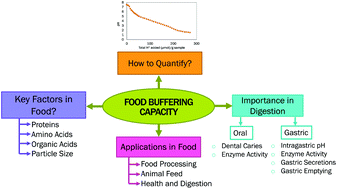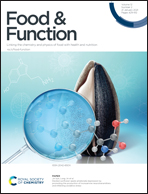Food buffering capacity: quantification methods and its importance in digestion and health
Abstract
The complex relationship between food properties and their behavior during human digestion is not well understood. During gastric digestion, food chemical and physical breakdown occurs as a result of gastric secretions and peristaltic contractions, respectively. Food breakdown is modulated through food properties such as physicochemical composition and macro-structure, including texture and viscosity. Another food property that may play a crucial role in food chemical breakdown and gastric secretions, but has been largely disregarded in previous studies, is food buffering capacity. Buffering capacity is a characteristic of foods due to the presence of acid/base groups, which causes a resistance to change pH after additions of acid or alkali. Buffering capacity of food has been studied in different applications, including for production of human food and animal feed, as well as for human health applications, including gastric digestion, gastroesophageal reflux disease, development of drugs and pharmaceuticals, food allergenicity, and dental health. However, a limitation for widespread adoption of buffering capacity measurements is a standard method, as results from many previous studies are not directly comparable and use different measurement and quantification methods. The relationship between food composition and physical properties with buffering capacity as well as how food buffering capacity may influence gastric secretions and gastric emptying during digestion are not well-characterized. The development of a fundamental understanding of the influence of food properties on buffering capacity and its impact on gastric secretions and breakdown during digestion are needed for improvement of future digestion studies and for optimization of functional foods. The importance of buffering capacity in food digestion processes, such as gastric secretions and food breakdown, is described in this review, as well as a description of methods previously used to quantify buffering capacity during in vitro and in vivo digestion.

- This article is part of the themed collection: Recent Review Articles


 Please wait while we load your content...
Please wait while we load your content...